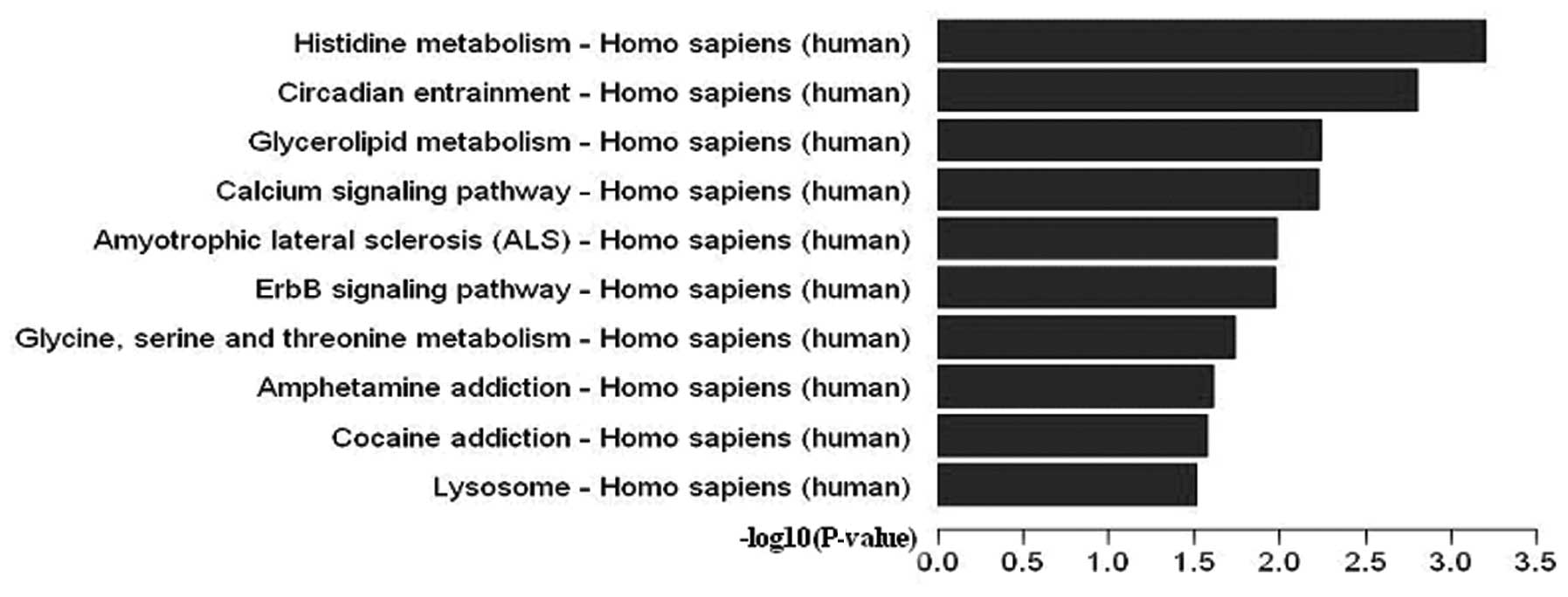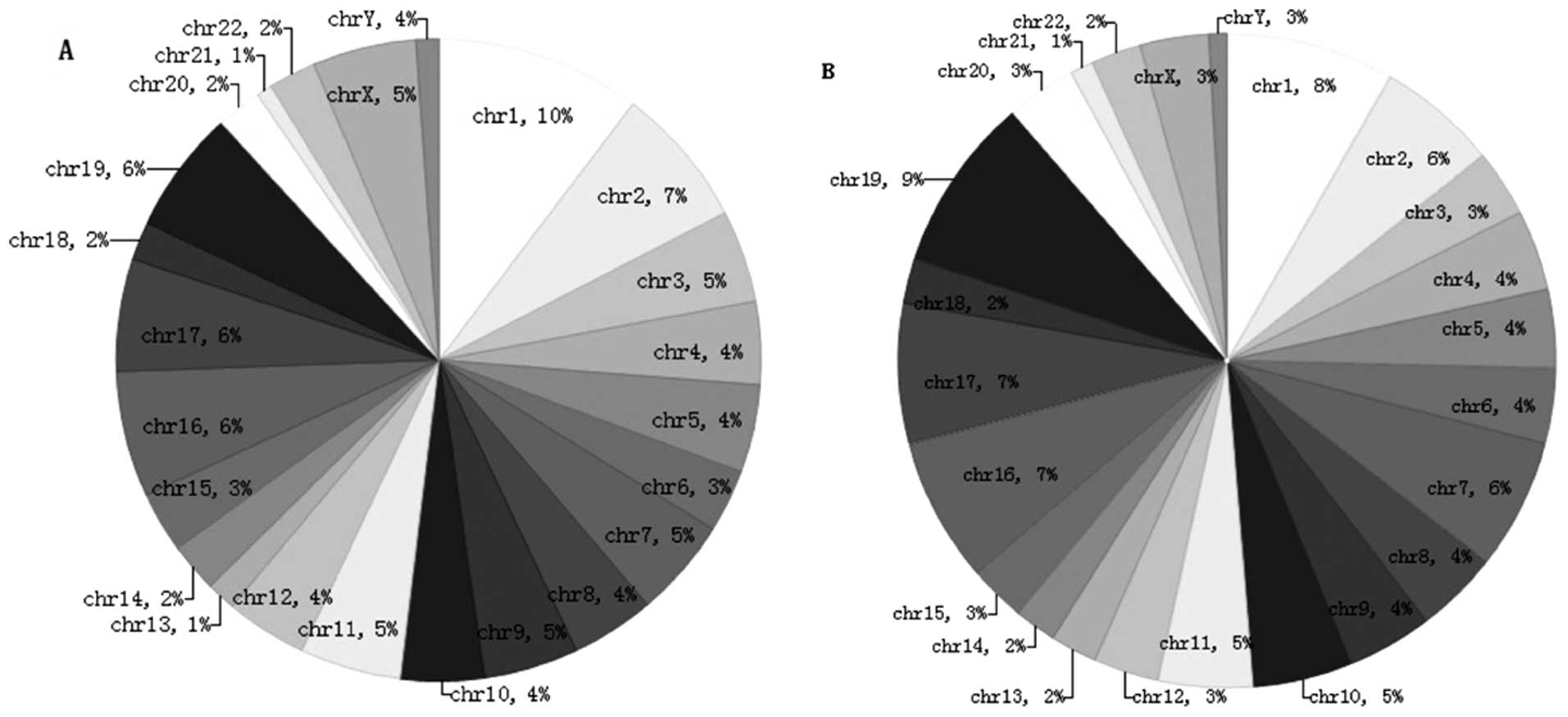|
1
|
Woodman I: Connective tissue diseases: The
MECP2/IRAK1 locus modulates SLE risk via epigenetics. Nat Rev
Rheumatol. 9:1972013.PubMed/NCBI
|
|
2
|
Baizabal-Carvallo JF, Alonso-Juarez M and
Koslowski M: Chorea in systemic lupus erythematosus. J Clin
Rheumatol. 17:69–72. 2011. View Article : Google Scholar : PubMed/NCBI
|
|
3
|
Ponticelli C, Glassock RJ and Moroni G:
Induction and maintenance therapy in proliferative lupus nephritis.
J Nephrol. 23:9–16. 2010.PubMed/NCBI
|
|
4
|
Thabet Y, Cañas F, Ghedira I, Youinou P,
Mageed RA and Renaudineau Y: Altered patterns of epigenetic changes
in systemic lupus erythematosus and auto-antibody production: is
there a link? J Autoimmun. 39:154–160. 2012. View Article : Google Scholar : PubMed/NCBI
|
|
5
|
Sui W, Hou X, Che W, Yang M and Dai Y: The
applied basic research of systemic lupus erythematosus based on the
biological omics. Genes Immun. 14:133–146. 2013. View Article : Google Scholar : PubMed/NCBI
|
|
6
|
Tahiliani M, Koh KP, Shen Y, et al:
Conversion of 5-methylcytosine to 5-hydroxymethylcytosine in
mammalian DNA by MLL partner TET1. Science. 324:930–935. 2009.
View Article : Google Scholar : PubMed/NCBI
|
|
7
|
Huang Y, Pastor WA, Shen Y, Tahiliani M,
Liu DR and Rao A: The behaviour of 5-hydroxymethylcytosine in
bisulfite sequencing. PLoS One. 5:e88882010. View Article : Google Scholar : PubMed/NCBI
|
|
8
|
Ito S, D’Alessio AC, Taranova OV, Hong K,
Sowers LC and Zhang Y: Role of Tet proteins in 5mC to 5hmC
conversion, ES-cell self-renewal and inner cell mass specification.
Nature. 466:1129–1133. 2010. View Article : Google Scholar : PubMed/NCBI
|
|
9
|
Yamaguchi S, Hong K, Liu R, et al:
Dynamics of 5-methylcytosine and 5-hydroxymethylcytosine during
germ cell reprogramming. Cell Res. 23:329–339. 2013. View Article : Google Scholar : PubMed/NCBI
|
|
10
|
Jin SG, Kadam S and Pfeifer GP:
Examination of the specificity of DNA methylation profiling
techniques towards 5-methylcytosine and 5-hydroxymethylcytosine.
Nucleic Acids Res. 38:e1252010. View Article : Google Scholar : PubMed/NCBI
|
|
11
|
Wu SC and Zhang Y: Active DNA
demethylation: many roads lead to Rome. Nat Rev Mol Cell Biol.
11:607–620. 2010. View
Article : Google Scholar : PubMed/NCBI
|
|
12
|
Williams K, Christensen J and Helin K: DNA
methylation: TET proteins-guardians of CpG islands? EMBO Rep.
13:28–35. 2011. View Article : Google Scholar : PubMed/NCBI
|
|
13
|
Song CX, Yi C and He C: Mapping recently
identified nucleotide variants in the genome and transcriptome. Nat
Biotechnol. 30:1107–1116. 2012. View
Article : Google Scholar : PubMed/NCBI
|
|
14
|
Stroud H, Feng S, Morey Kinney S, Pradhan
S and Jacobsen SE: 5-Hydroxymethylcytosine is associated with
enhancers and gene bodies in human embryonic stem cells. Genome
Biol. 12:R542011. View Article : Google Scholar : PubMed/NCBI
|
|
15
|
Xu Y, Wu F, Tan L, et al: Genome-wide
regulation of 5hmC, 5mC, and gene expression by Tet1 hydroxylase in
mouse embryonic stem cells. Mol Cell. 42:451–464. 2011. View Article : Google Scholar : PubMed/NCBI
|
|
16
|
Gao Y, Chen J, Li K, et al: Replacement of
Oct4 by Tet1 during iPSC induction reveals an important role of DNA
methylation and hydroxymethylation in reprogramming. Cell Stem
Cell. 12:453–469. 2013. View Article : Google Scholar : PubMed/NCBI
|
|
17
|
Thomson JP, Lempiäinen H, Hackett JA, et
al: Non-genotoxic carcinogen exposure induces defined changes in
the 5-hydroxymethylome. Genome Biol. 13:R932012. View Article : Google Scholar : PubMed/NCBI
|
|
18
|
Guo JU, Su Y, Zhong C, Ming GL and Song H:
Hydroxylation of 5-methylcytosine by TET1 promotes active DNA
demethylation in the adult brain. Cell. 145:423–434. 2011.
View Article : Google Scholar : PubMed/NCBI
|
|
19
|
Sironi M, Biasin M, Forni D, et al:
Genetic variability at the TREX1 locus is not associated with
natural resistance to HIV-1 infection. AIDS. 26:1443–1445. 2012.
View Article : Google Scholar : PubMed/NCBI
|
|
20
|
Hur JW, Sung YK, Shin HD, Cheong HS and
Bae SC: TREX1 polymorphisms associated with autoantibodies in
patients with systemic lupus erythematosus. Rheumatol Int.
28:783–789. 2008. View Article : Google Scholar
|
|
21
|
Lee-Kirsch MA, Gong M, Chowdhury D, et al:
Mutations in the gene encoding the 3′–5′ DNA exonuclease TREX1 are
associated with systemic lupus erythematosus. Nat Genet.
39:1065–1067. 2007. View
Article : Google Scholar : PubMed/NCBI
|
|
22
|
O’Driscoll M: TREX1 DNA exonuclease
deficiency, accumulation of single stranded DNA and complex human
genetic disorders. DNA Repair. 7:997–1003. 2008. View Article : Google Scholar : PubMed/NCBI
|
|
23
|
Kavanagh D, Spitzer D, Kothari PH, et al:
New roles for the major human 3′–5′ exonuclease TREX1 in human
disease. Cell Cycle. 7:1718–1725. 2008. View Article : Google Scholar : PubMed/NCBI
|
|
24
|
Pulliero A, Marengo B, Domenicotti C, et
al: Inhibition of neuroblastoma cell growth by TREX1-mutated human
lymphocytes. Oncol Rep. 27:1689–1694. 2012.PubMed/NCBI
|
|
25
|
Namjou B, Kothari PH, Kelly JA, et al:
Evaluation of the TREX1 gene in a large multi-ancestral lupus
cohort. Genes Immun. 12:270–279. 2011. View Article : Google Scholar : PubMed/NCBI
|
|
26
|
Kim K, Sung YK, Kang CP, Choi CB, Kang C
and Bae SC: A regulatory SNP at position -899 in CDKN1A is
associated with systemic lupus erythematosus and lupus nephritis.
Genes Immun. 10:482–486. 2009. View Article : Google Scholar : PubMed/NCBI
|
|
27
|
Miyagawa H, Yamai M, Sakaguchi D, et al:
Association of polymorphisms in complement component C3 gene with
susceptibility to systemic lupus erythematosus. Rheumatology.
47:158–164. 2008. View Article : Google Scholar : PubMed/NCBI
|
|
28
|
Yang W, Tang H, Zhang Y, et al:
Meta-analysis followed by replication identifies loci in or near
CDKN1B, TET3, CD80, DRAM1, and ARID5B as associated with systemic
lupus erythematosus in Asians. Am J Hum Genet. 92:41–51. 2013.
View Article : Google Scholar : PubMed/NCBI
|















